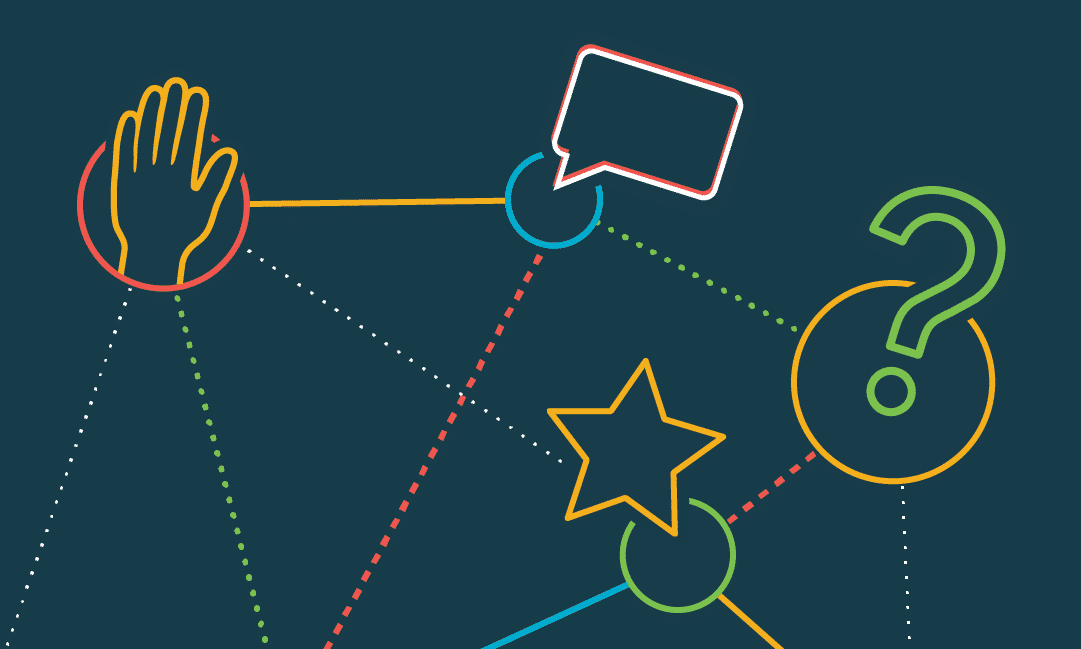Employee resource groups (ERGs) can be a secret weapon for human resources teams. Learn how to maximize the effectiveness of your employee resource group efforts, including how to utilize collaboration among ERGs, gain executive support and strategies to create ERGs that are thriving and self-sufficient.
Talent is a company’s greatest asset, and offering an inclusive workplace where team members feel empowered to be their authentic selves is a key driver to attracting and retaining talent. Employee resource groups are one way for organizations to build community while amplifying company values like gender equity, diversity and inclusion and social impact initiatives.
What is an employee resource group?
Employee resource groups (ERGs) are workplace networks for team members with shared characteristics, special interests or life experiences. Generally employee-led rather than leadership-run, these voluntary affinity groups support professional development, strengthen business impact internally and externally, and promote commitments to a diverse workplace. Building an ERG program is a positive way for organizations to show an investment in its employees by putting dedicated company resources towards employee education, community building and social impact initiatives.
Employee Resource Group Examples
Employee resource groups are generally created by motivated team members who want to build community with a certain special interest group, or when they see a need for company education around a given topic. With that in mind, each company’s ERGs are unique by design, but common resource groups may include:
- A women’s network
- A network for people of color
- An LGBTQ network
- A working parents support group
- A sustainability committee
- A veterans support group
- A network for people with disabilities
- A mental health advocacy group
- A mentorship program
- A young professionals network
- A community impact and volunteerism committee
Benefits of an employee resource group
Employee resource groups are crucial to a company’s diversity and inclusion strategy. A report from Bentley University finds that nearly 90% of all Fortune 500 companies have ERGs, and an average of 8.5% of employees at U.S. based companies belong to an ERG.
According to the Society for Human Resource Management, 90% of companies examined helped make new hires more comfortable during the onboarding process, and 70% of organizations relied on ERGs to build a workforce to reflect the demographics of their customer base.
Establishing ERGs builds employee engagement, and allows companies to create a welcoming and productive work environment. Building camaraderie around shared identities and values, ERGs give employees opportunities to be heard and valued by their peers and executive leadership. ERGs also provide employees with the opportunity to problem-solve, innovate, and showcase their leadership skills, regardless of seniority or managerial status.
Steps to starting an employee resource group
To get your company’s first employee resource group off the ground, follow these four simple steps:
1. Align the ERG with your company’s mission
For ERGs to be successful, their purpose should tie into a company’s overall mission and values. Is your organization focused on giving back to your community? Or is your goal to build a more diverse workforce?
Choose a topic for your first employee resource group that aligns with overall company goals. Consider writing a mission statement for your ERG that touches on your organization’s core values. Showing how your ERG advances the overall company strategy will help earn support from other areas of the company.
2. Get leadership buy-in
Executive support for ERGs is essential for success. To gain buy-in, find executive or C-suite sponsors who are personally committed to diversity and inclusion or social impact initiatives. Come with talking points and data that showcase how an employee resource group will make a positive impact on the organization overall. Make sure human resources leaders are especially invested, as you’ll need their support to share ERGs during the new hire onboarding process, and in promotional materials for employee health and wellness programs.
3. Assemble the ERG team
Before launching the ERG, establish a communication plan and identify benchmarks for success, including long-term goals and potential challenges. Next, recruit colleagues willing to take on a leadership role, such as committing to a monthly meeting or making time to plan and execute events. Finally, find other like-minded people who are passionate about supporting your ERG but can’t commit to running the group. It’s just as important to have members who are willing to participate and spread the word as it is to have leaders and planners.
4. Launch the ERG
A strong communications plan is a major component of an employee resource group’s success strategy. Begin by creating a simple presentation that outlines the ERG’s goals, events, and ideas for the first year. Try not to bite off more than you can chew — if it’s only a few events within the first 12 months, that’s fine. Use the company’s brand standards to create a logo for the ERG that ties it directly to the organization.
Equipped with your members and materials, generate excitement for the ERG by hosting a company event. Throwing a happy hour is a great way to introduce the ERG’s mission, lay out future events, and grow the group’s core membership.
How to maximize the effectiveness of an employee resource group
ERGs can be contagious. Once a company establishes one, others may realize they want to participate or start their own. Making the most out of ERGs requires coordination from team leads and human resources to ensure all groups get the same level of care and treatment.
Use these tips to boost the impact of your company’s ERGs:
- Coordinate company-wide ERG initiatives, determining how ERGs will interact and support one another. A rising tide lifts all boats, and a concerted effort to support all ERGs will ensure any and all groups have the resources they need.
- Consider which ERGs should be added to the company’s portfolio. Keep an open ear for potential groups employees might be interested in assembling.
- Ensure ERG events don’t compete with one another. Make sure activities hosted by ERGs don’t fall on the same day to prevent having to choose one over the other.
ERGs provide opportunities to build employee engagement, establish camaraderie amongst coworkers, and build community through shared identities and values. By representing specific communities, educating employees and focusing on social impact, ERGs can significantly boost a company’s commitment to diversity and inclusion.


